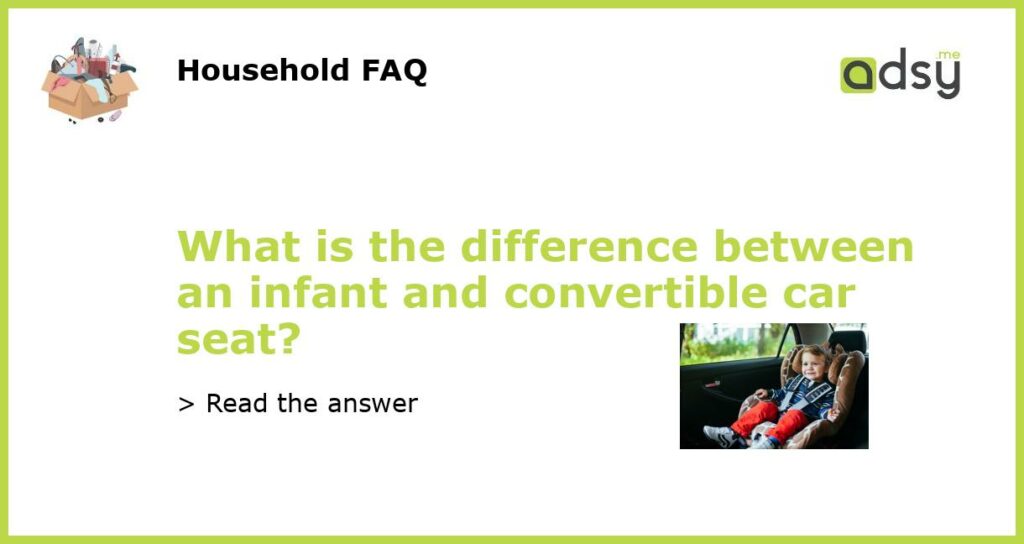What is the difference between an infant and convertible car seat?
Parents have numerous things to consider when buying a car seat, and one of the most significant decisions is whether to choose an infant or convertible car seat. Both types of seats protect children in different ways, and each one has unique advantages and disadvantages.
What is an infant car seat?
An infant car seat is designed for newborns and infants, typically from birth up to 15-18 months old, depending on the seat. These seats are rear-facing only, which means they only face the rear of the car and are secured with a seat belt or a LATCH system. Infant seats come with a detachable base that is left in the vehicle for easy installation and removal of the seat.
What is a convertible car seat?
A convertible car seat is designed for children from birth to around four years old, depending on the seat. They can be installed in both rear-facing and forward-facing positions. Rear-facing, they are ideal for infants, and they can then be turned forward-facing when the child is old enough. Convertible car seats are larger than infant car seats and may not have the carrying handles found on infant seats.
What are the pros and cons of infant car seats?
One significant advantage of infant car seats is their portability. They come with a carrying handle, which makes them easy to move in and out of the car without waking the baby. They are also designed with additional head and neck support for newborns, along with removable inserts for adjusting the fit.
However, infant car seats have a shorter lifespan, and parents need to replace them once their child outgrows the rear-facing weight limit of the seat, usually around 15-18 months. Also, they are typically more expensive than convertible chairs, and parents need to purchase another seat in a year or two after outgrowing the infant car seat.
What are the pros and cons of convertible car seats?
Convertible car seats can be used from birth to around four years old, saving parents the expense of buying an infant car seat. They are also designed to be used for more extended periods, with higher rear-facing weight limits, providing more protection for babies and toddlers. Additionally, to forward-facing seating options, many convertible seats can become booster seats, offering an additional two to three years of use.
However, convertible car seats are bulkier and heavier than infant car seats, often making them more challenging to move in and out of the car. They also lack the convenience of a detachable base and are not as suitable for newborns and smaller babies who require additional head and neck support.






